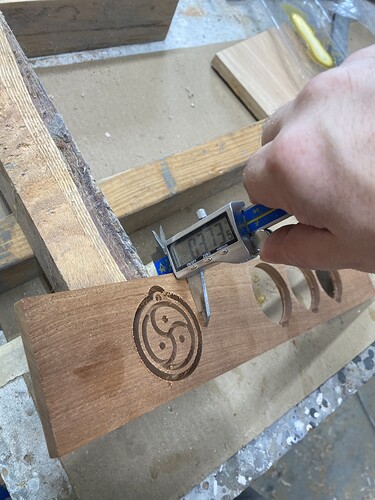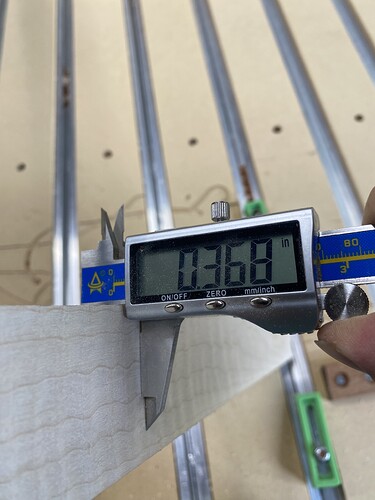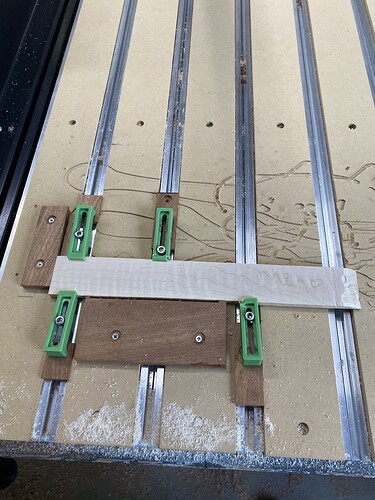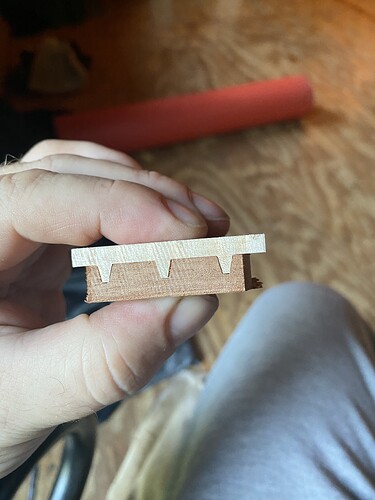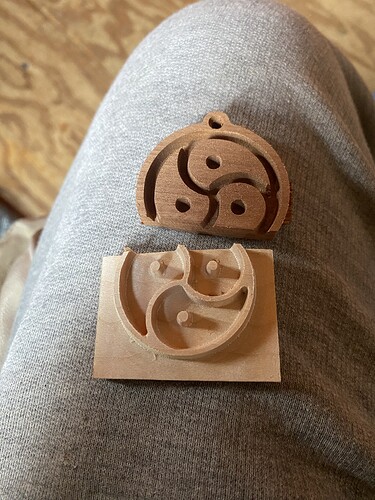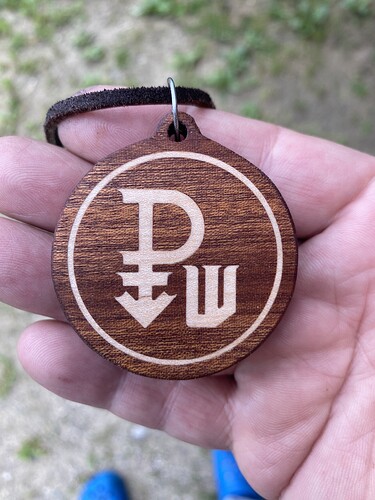I can’t wait to try this ! What would you change to make the saw gap even bigger? Just to understand what affects that gap.
That image was created before the inlay feature in CC. To use as a guide for the inlay feature, replace the word “Start Depth” on the Male side with “Glue Gap” which gets measured from the Max Depth.
Then you leave your Start depth at 0.0 (Top of Stock).
So just add the same amount to the max depth & glue gap, which is really the saw gap.
As I suggested above, instead of max: 0.1 & glue gap 0.050, try max 0.150 & glue gap 0.100. That will add 0.050 to the glue gap (saw gap). Or go Max 0.200 & glue gap 0.150.
ok so i had to remake the files from scratch but here they are. There are 2 one pocket one inlay i used the largest of the above settings with .2 depth.
Also i came across something that said not to use 20 degree bits from amazon, so ill admit now that the bit i used is from amazon and would be more then willing to buy a CC bit.
yin yang pocket.c2d (132 KB)
yin yang inlay.c2d (80 KB)
The piece of wood used on this inlay was about .1 thicker then the ones in the file above.
Why are you setting the origin at the bottom?
I believe you’ll find it easier to set it at the top.
So I never have to reset 0 on the z axis. I thought that’s the most accurate way since it never changes?
It’s only as accurate as your measurement of the stock and its preparation.
I only use my origin at the stock bottom when I’m doing a through cut. All other times I use the stock top.
Scott
Well that’s easy enough to change. But do you think that’s what is wrong with the project?
I don’t see the benefit to using the top of your stock. Is there a reason for that?
Your depth of cut is relative to the top of the stock and the thickness measurement is less critical.
Ok but I don’t think that is the issue with my inlay, do you?
If the stock thickness is not consistent, and you’re not surfacing the stock so they’re all the same,
you either need to change the stock thickness with every new piece, or set the zero to top of stock
so all the cuts are the same width/depth.
If the stock is thicker than planned, then the width of the pocket will be wider, and the top of the male (which becomes the bottom when you flip it over) will be narrower. You want the bottom of the male piece to be just a little bit wider than the bottom of the pocket so it doesn’t bottom out & you get a tight fit on the sides.
If you measure the height on this cross section, is it larger than designed?
There should be a bit more gap at the bottom, and at least some gap at the top.

I don’t know if this will help but IDC Woodcraft has this video and he says you’ll get it right every time if you follow what he does. Maybe worth a try?
I stock is extremely close to the right thickness. As far as I can tell it comes out of a high end thickness planer, which does have some variance but it’s a 3 hp industrial grade delta so there’s a few hundredths of an inch in difference is that enough to make a problem.?
I even posted the file and the caliper measurements that they showed in case anyone was able to check that that was close enough. As you can see, they are still bottoming out and all the pieces are the proper thickness as far as I can tell.
